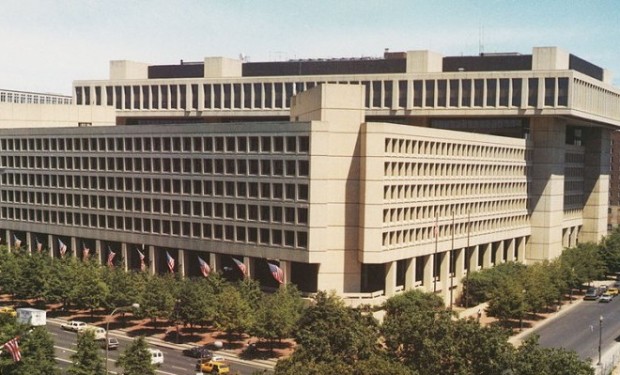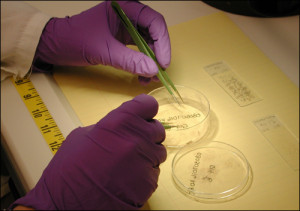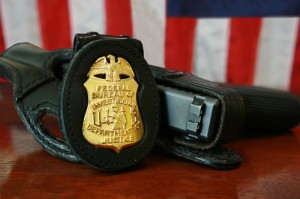Fair chance for a fair review: FBI hair sample analyses possibly led to wrongful convictions
FBI will review thousands of convictions from between 1985 and 2000 that relied upon hair sample analyses.
The Federal Bureau of Investigation (FBI) recently announced that it will review cases where hair analyses were used to make thousands of convictions, some even involving the death penalty. More than 2,000 convictions from 1985 to 2000 will be re-opened and re-examined to determine if individuals have been wrongly convicted based on over-exaggerated or inaccurate hair samples.
Human hair is composed of keratin, a protein that contains specific characteristics that can determine the source. Suspects are associated with victims, or victims with suspects, by hair that they may leave behind. This hair is then compared on a microscopic level and possibly entered into evidence in a criminal investigation. Random hair samples are taken from the head and pubic regions of both victims and suspects to make a total of twenty-five full-length hairs to make an adequate representation of an individual’s hair characteristics.
As recognized in an April 2009 article in the FBI’s Forensic Science Communications publication, hair microscopy and hair comparisons cannot guarantee an absolute personal identification. In fact, the article’s conclusions acknowledge that “It is generally accepted within the forensic science community that hairs are not a means of positive identification, but they can provide substantial information because of the variation in hair among individuals.” This valuable information can be very persuasive because of the rarity of finding two people with the same characteristics on a microscopic level.
“This will be critical to giving wrongly convicted people a fair chance at a fair review.”
A Virginia attorney and president of the National Association of Criminal Defense Lawyers, Steven D. Benjamin, commented on the decision of the FBI to reopen cases by saying, “This will be critical to giving wrongly convicted people a fair chance at a fair review.” The National Association of Criminal Defense Lawyers has joined with the Innocence Project and pro bono attorneys to encourage review. The process of review will consist of a study that detects any hair analyses that were reported inaccurately. In the event that the review exposes any errors, the defendants will be notified and receive free DNA testing—a more reliable form of positive identification.
FBI Special Agent Ann Todd has claimed that there is no reason to believe that flawed techniques have been used; however, the review will serve to verify that reports “reflect the bounds of the underlying science.”
Even though Odom’s hair samples were cited as “rare” and “indistinguishable,” DNA evidence proved that he was wrongly convicted.
One of the first cases that led to the newly-announced review was a 1981 case involving Kirk Odom. Odom was convicted of rape and sodomy based on hair samples collected at the crime scene. Odom served twenty-two years in prison before the FBI exonerated him based on DNA testing that was not available at the time of his conviction. Even though Odom’s hair samples were cited as “rare” and “indistinguishable,” DNA evidence proved that he was wrongly convicted. This review, along with two others, inspired the broader FBI review currently taking place.
An alarming seventy-two out of 310 people exonerated through DNA evidence were wrongly convicted based on the use of hair evidence, according to the Innocence Project. Even more unsettling is the fact that some of these individuals died before they were cleared. For instance, Timothy Brian Cole died in prison in 1999 before DNA evidence—and a confession from the actual perpetrator—could disprove the hair analysis that wrongfully led to his 1986 conviction of raping a Texas Tech University student.
However, not all reviews have been futile. Dwayne Allen Dail, of Goldsboro, NC, was cleared in 2007 after being wrongly convicted of a rape in 1989. Even though he spent eighteen years in prison, he has now been freed after DNA evidence once again trumped an incorrect hair analysis.
The Innocence Project has a database specifically dedicated to “unvalidated and improper forensic science.
In addition to Dail and Odom, Habib Abdal was wrongfully convicted of rape in 1983. Sixteen years passed before Abdal was exonerated. A forensic scientist compared Abdal’s hairs to those found at the scene, and—even though they were distinctively different—Abdal was not eliminated as a suspect. The scientist defended the discrepancy by claiming that it was normal for different hairs to come from the same person. Sufficient empirical data, however, did not exist on the frequency of class characteristics for human hair and Abdal’s situation highlighted another invalid use of hair analysis to influence a conviction.
In another case where hair analysis was not as reliable as believed, Timothy Durham was convicted of rape in 1995. Durham’s conviction was based in part on a comparison of his hairs by a forensic analyst who claimed the hairs had characteristics seen in less than five percent of hair samples he had personally examined. Again, it was found after the fact that empirical data did not substantiate the analyst’s claim and should not have been considered in convicting Durham. DNA testing on the physical evidence from the crime scene was conducted in 1996, ruling out Durham as the perpetrator. He was subsequently exonerated after spending three and a half years in prison.
Improper forensics in the form of hair analysis is undoubtedly not a new problem, as the above examples demonstrate. In fact, the Innocence Project has a database specifically dedicated to “unvalidated and improper forensic science.“ Innocent people continue to be exonerated—even as recently as this year—as the FBI continues to review cases.
“The government’s willingness to admit error and accept its duty to correct those errors in an extraordinarily large number of cases is truly unprecedented.”
Starting in the 1970s, FBI scientists have admitted that hair association is not a perfectly reliable source when it comes to identification. The government must now account for those errors in testing. Peter Neufeld is a co-director at the Innocence Project and commented that “the government’s willingness to admit error and accept its duty to correct those errors in an extraordinarily large number of cases is truly unprecedented. It signals a new era in this country that values science and recognizes that truth and justice should triumph over procedural obstacles.”
On the other hand, several FBI experts have testified that hair analysis is reliable for positive identification and can provide a determinate match. Hair microscopy, however, cannot compare to the positive identification provided by DNA and fingerprints. The National Academy of Sciences (NAS) conducted a study in 2009 that could not find any research that a hair sample belongs exclusively to one person. The study, titled “Strengthening Forensic Science in the United States: A Path Forward,” further stated that hair analysis was “highly unreliable.”
The NAS report found a “system plagued by a paucity of good research, fragmentation, inconsistent practices, and weak governance.”
Research for the NAS report began in 2005 when Congress appropriated funds to the NAS to create a committee to maximize the use of forensic techniques, as well as disseminate best practices and guidelines to ensure quality and consistency in the use of forensic technologies and techniques. The Honorable Harry T. Edwards, co-chair for the committee and Senior Circuit Judge and Chief Judge Emeritus of the United States Court of Appeals for the D.C. Circuit, offered his congressional testimony on March 18, 2009, regarding the report.
Judge Edwards explained how the committee heard from experts, including forensic science practitioners and members of the legal profession for two years. The report found a “system plagued by a paucity of good research, fragmentation, inconsistent practices, and weak governance.”
The report revealed that the quality of forensic science suffers because there is a frequent lack of solid, credible scientific research and that forensic analysts often exaggerate their testimony by claiming that an evidentiary specimen is actually a match. For example, an FBI fingerprint expert testified that the fingerprint analysis had a zero error rate, even though this claim was certainly a myth. The report also recognized that inconsistent practices in crime laboratories are a problem resulting in part from unqualified practitioners and nonexistent quality control measures for questionable evidence. These factors can further lead to forensic personnel exaggerating the reliability of certain forensic tests.
Although the report acknowledged that it was not a law reform proposal, it demonstrated that mistakes in forensic analysis are not a new problem. There are real problems with the reliability and accuracy of many forms of forensic analyses, leaving a good deal of uncertainty in some forensic conclusions. The NAS committee believed that sound operational principles and procedures, among other recommendations, would be needed for forensic science experts to better analyze evidence in a more accurate way when reporting their findings in court.
Files will continue to be reviewed for cases where misleading hair analysis testimony was used to secure a conviction.
Overall, the extent of the FBI’s review is unclear and is still in the beginning stages. Currently, 15,000 of 21,700 FBI files under examination have been reviewed. Files will continue to be reviewed for cases where misleading hair analysis testimony was used to secure a conviction. Where error is found, statute of limitations will be waived and post-conviction appeals will be allowed. Death penalty cases as well as those involving individuals who are currently incarcerated will take priority.







